Steve Bould‘s managerial career began in the Arsenal academy not long after finishing his career with Sunderland.
The long-time Arsenal defender then would become legendary manager Arsène Wenger’s assistant with the North London side for seven seasons before assuming the role of head coach of the Arsenal U23 side.
After being sacked in the summer of 2021, Bould took a year away from football, until last season when he was hired in the summer as head coach of Belgian second division side Lommel SK, who are owned by Manchester City‘s owners, the City Group.
Steve Bould’s first season with Lommel was what many would consider a success, with the club finishing 7th in the regular season of the Challenger Pro League, missing out on the Championship playoffs by two points.
They ended up finishing top of the relegation playoff group, with this Steve Bould tactical analysis piece looking at the tactics of the Englishman during his first season in Belgium, analysing his tactics, and where he was able to have success with Lommel.
Steve Bould Preferred formation and style of play
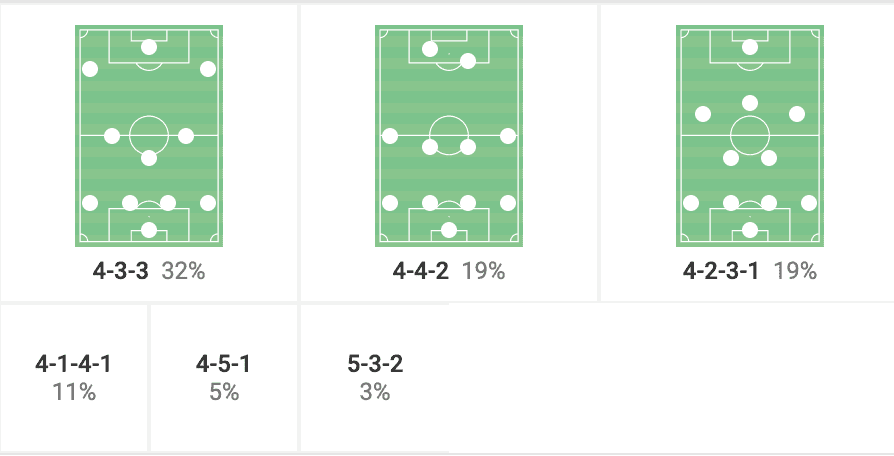
As the image above shows, Bould has normally set his Lommel side up in a 4-3-3 formation, while also using a 4-4-2 or 4-2-3-1 at times.
In general, Bould prefers to utilise a back four formation, allowing him to have the most potential flexibility from a positional standpoint.
In regards to the style of play that Lommel have under the former Arsenal defender, the Belgian side look to control possession throughout the course of the match, with Lommel averaging just over 54% of possession this season.
In general, under Steve Bould, Lommel have looked to play an attractive attacking brand of football this season.
This is no surprise, as Bould has always been around this style of play, considering the many years he played and worked under Arsène Wenger at Arsenal.
As this tactical analysis progresses, we will look at some different tactical principles that Bould has used in his preferred attacking style of football.
Steve Bould Build up play
When it comes to build-up play, Bould looks for his Lommel side to heavily utilise the goalkeeper and build out play from the back most times.
The defensive midfielder for Lommel is a key player for Bould’s side during the build-up phase which will be highlighted in the following examples.
As already mentioned earlier, Lommel have looked to dominate possession this season, with this possession-based style originating through the use of using less of a direct style of build-up play from the goalkeeper.
This is not to say that Lommel will not play direct, it obviously depends on the situation, but they prefer playing out from the back.
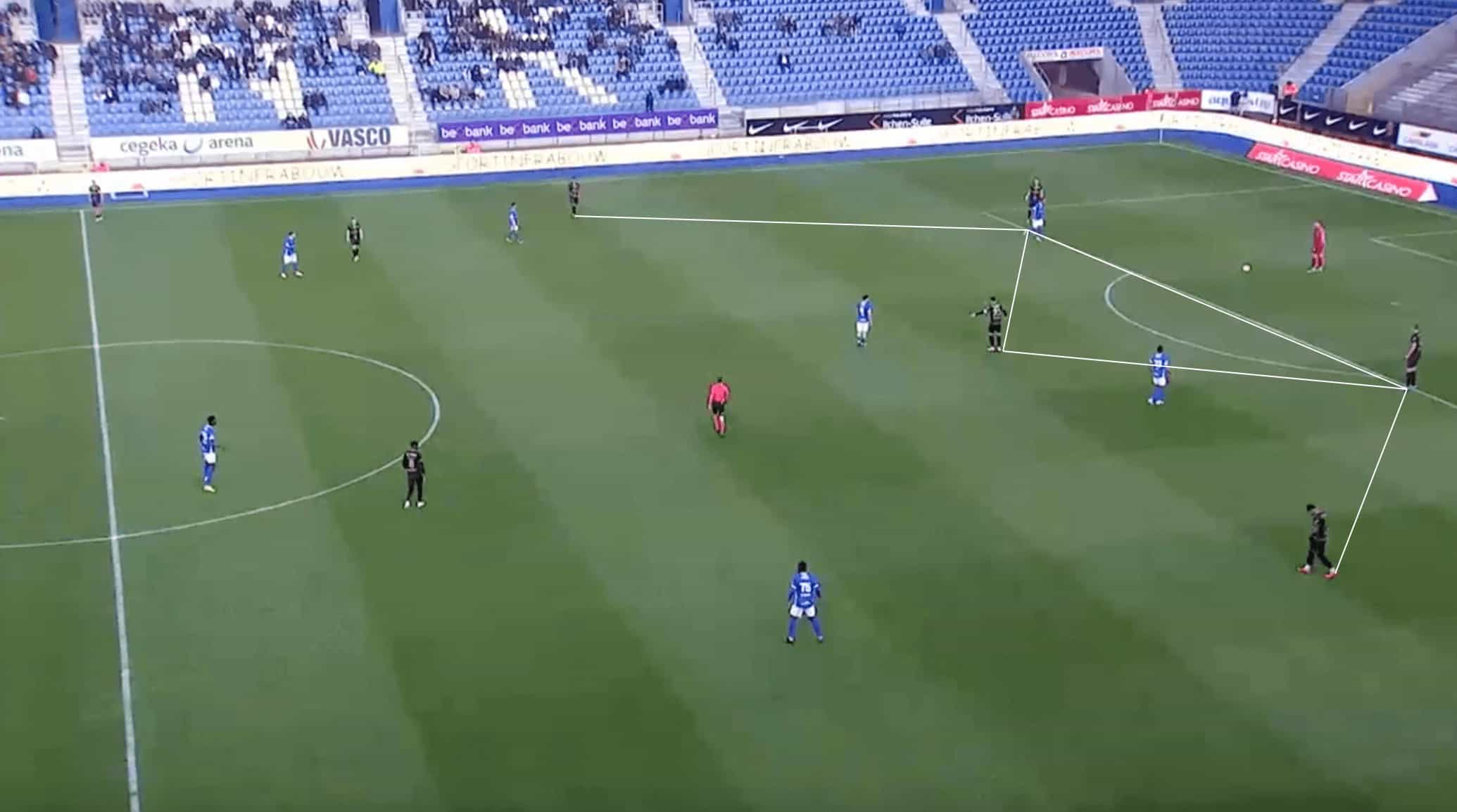
The image above shows Lommel’s build-up shape from their recent Challenger Pro League match against Genk II.
As we can see from this image, the fullbacks will look to move higher and keep the width, with the centre-backs staying on the edge of the 18-yard box to be options for the goalkeeper.
However, the key is the defensive midfielder for Lommel.
In this match, it was 34-year-old Spanish midfielder Alex Granell.
The positioning of Granell forms a triangle in midfield, which opens up multiple different passing lanes between the three if the goalkeeper plays to one of them.
It also allows Lommel the ability to quickly transition the ball from the defensive third into the attacking third, giving them the ability to progress the ball and attack quickly.
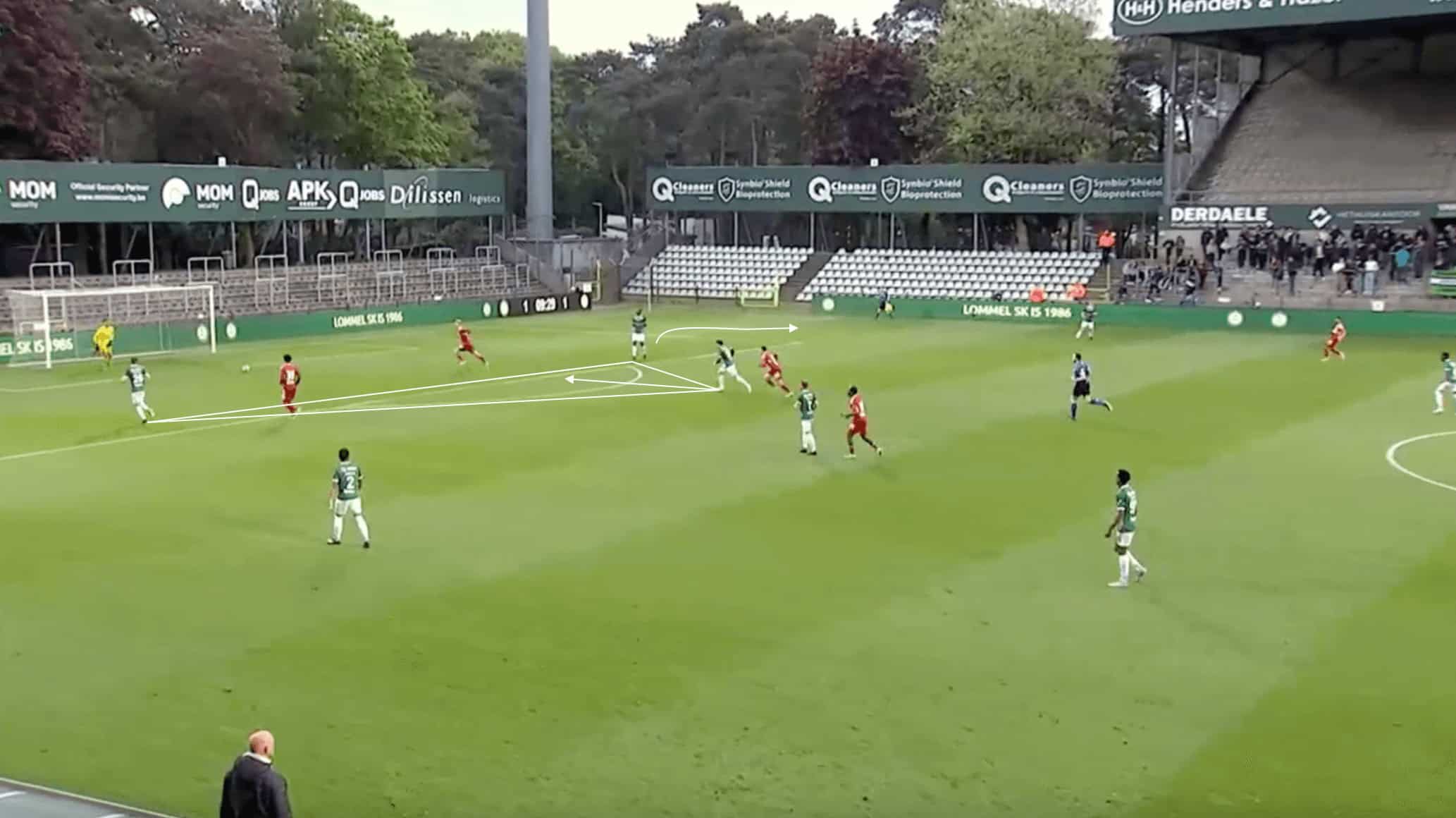
The image above shows another example of the triangle in build-up formed by the defensive midfielder dropping into the defence.
In this build-up phase against Standard Liége II, the ability for multiple passing lanes to be created by this shape is shown.
As the ball is played to the goalkeeper, the ‘6’ for Lommel drops in, forming a triangle with the two central defenders.
The goalkeeper plays the ball forward to the defensive midfielder, who is able to play a first-time pass to the centre-back who has drifted out into a wider position, with a passing lane being opened up due to the pressure the opposition striker is putting on the Lommel goalkeeper.
This allows Lommel to escape the press from Standard Liège II, enabling them to continue progressing the ball into the opposition’s half.
As this section has shown, Steve Bould’s use of the defensive midfielder forming a triangle during build-up phases of play has worked to great success for the Belgian side this campaign.
Using the triangle allows Lommel to escape presses from opposition sides more easily, as well as give multiple passing options for Lommel to progress the ball into the opposition’s half and into the feet of their attackers.
Steve Bould Attacking style of play
When it comes to how Steve Bould wants his Lommel side to attack, most of their attacking moves originate from the wide channels, with balls normally then played centrally to the forwards, or midfielders making runs into the attacking third from deeper positions.
They also look to use movement off the ball in attacking phases of play to try and open gaps in the opposition’s defence, which allows them to more easily play penetrating passes in the final third area.
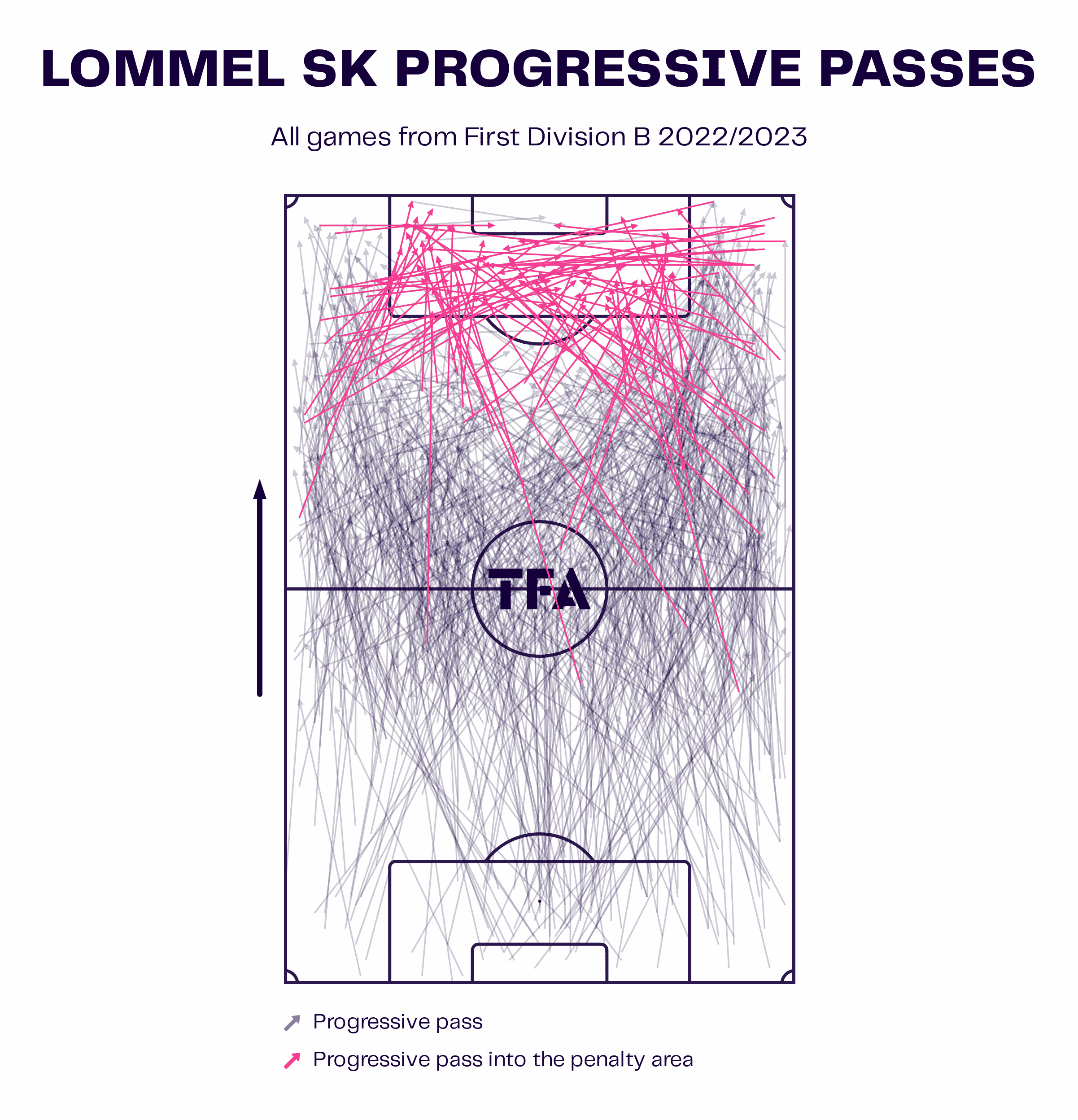
The data viz graphic above shows the progressive passes of Bould’s Lommel side this season.
It corroborates the eye test that most of the attacking moves that progress into the penalty area originate from the players who are situated in the wide channel, whether that be the wingers or fullbacks.
The Belgian side also finished the Challenger Pro League season as the side with the second most progressive runs of any side in the Belgian second division, with 608, or 17.7 per 90 minutes.
This highlights Lommel’s tendency to try and take opposition players on in these channels, looking to pin defences back.
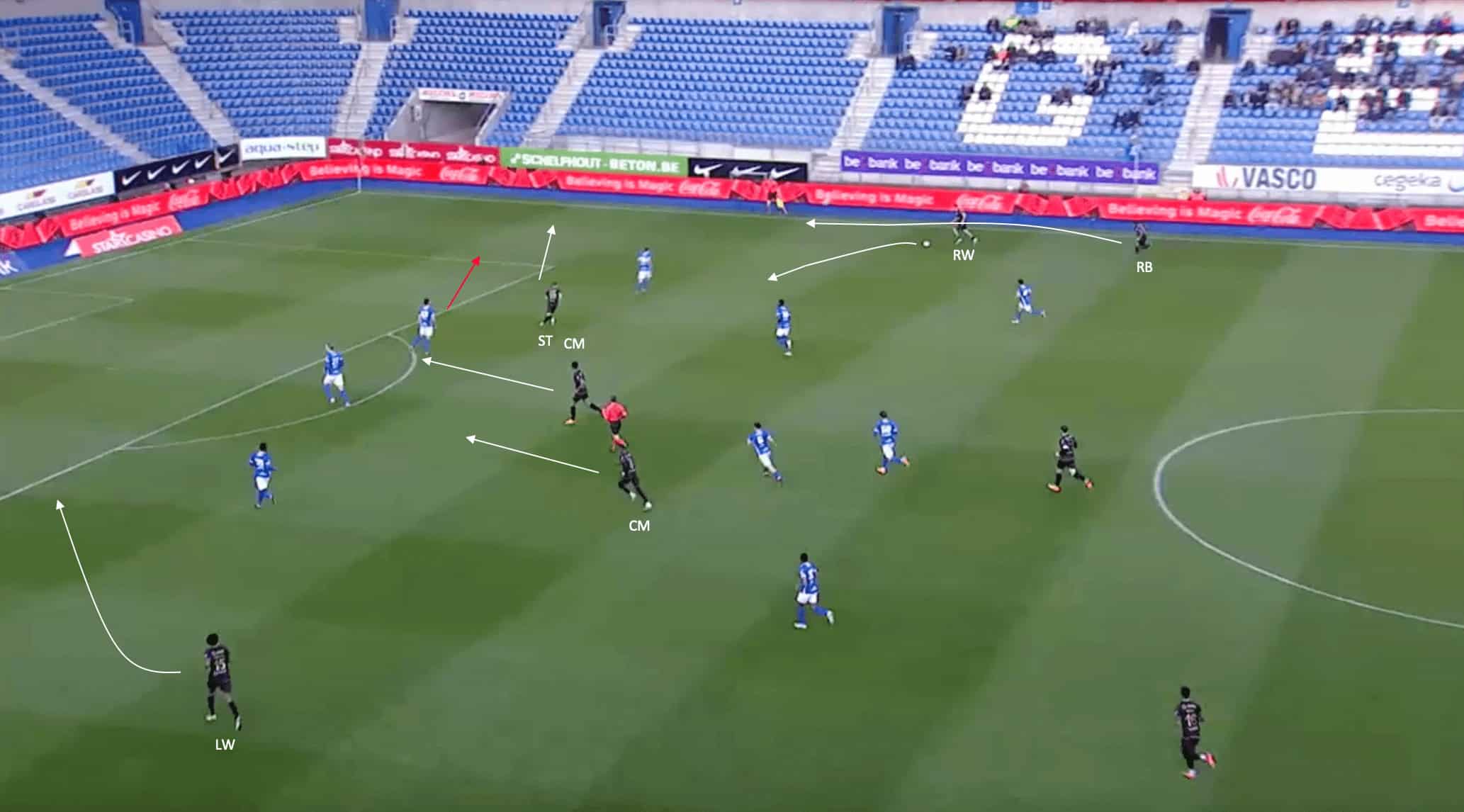
The image above shows an example of the off-the-ball movement in the attacking third that Lommel have utilised frequently this season.
In this attacking phase of play above against Genk II, the Lommel RW is in possession and attempting a progressive run to try and pin the opposition’s defence back.
The Lommel RB is making an overlapping run past the winger, becoming an option as a result.
The forward has drifted into the half-space between the centre-back and fullback of the opposition, dragging over the central defender as a result.
This allows the space to open up for the two central midfielders to make progressive runs to become attacking options.
As a result, this opens multiple different options for the winger to attempt to find to continue to progress the ball into the opposition’s penalty box.
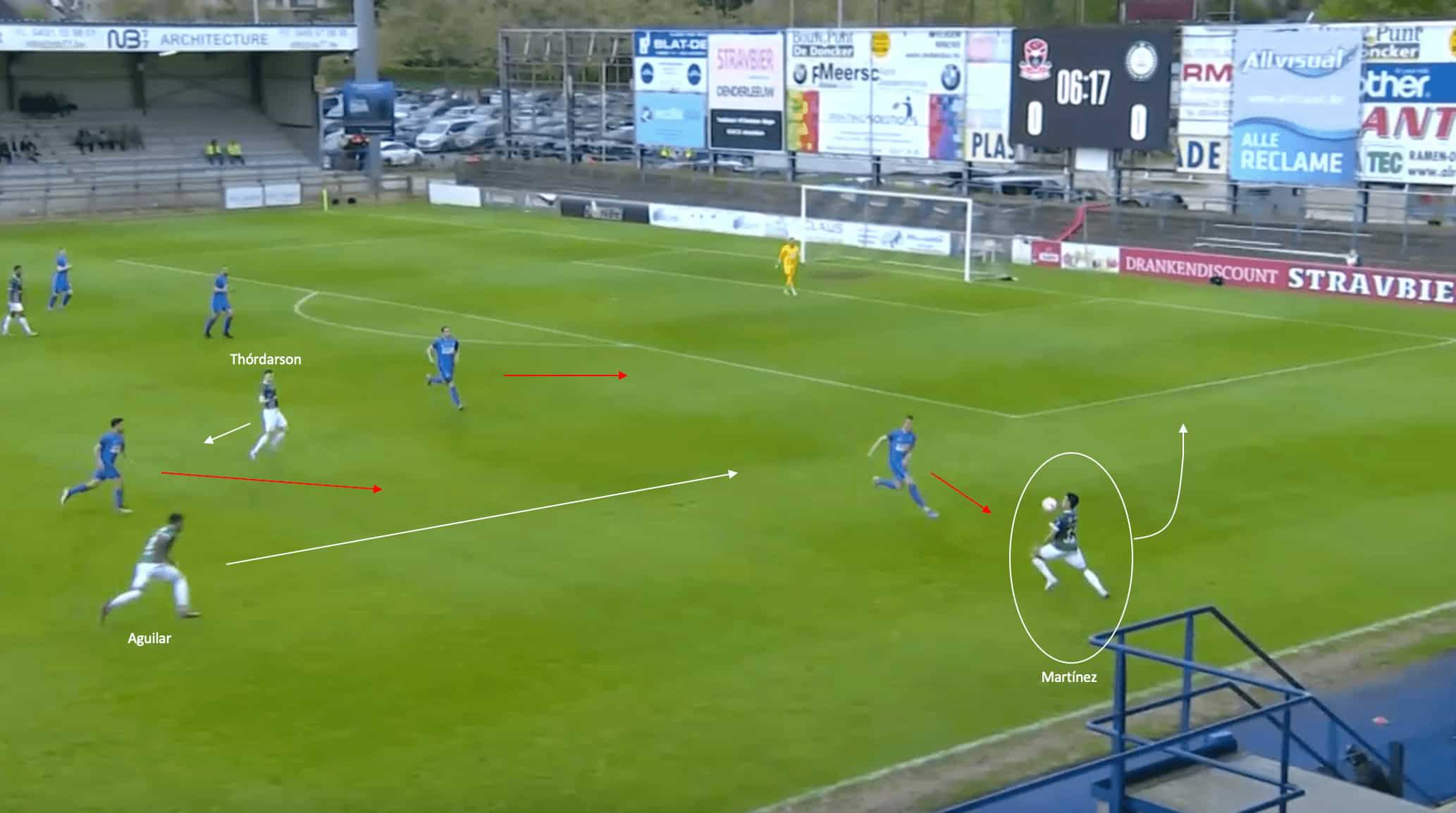
The image above shows the off-the-ball movement and interaction between both the winger and fullback for Lommel.
24-year-old Costa Rican winger Alonso Martínez gathers possession after a switch of play pass from the opposite flank.
The fullback, 20-year-old Peruvian Kluiverth Aguilar, makes an underlapping run, creating an overload against the Dender fullback.
To neutralise the overload opportunity, the Dender centre-back slides over and the midfielder follows Aguilar into the attacking zone.
As a result, Thórdarson decides to drop off and sit in the half-space, making himself an unmarked passing option for the winger.
The ball is instead played to the overlapping Aguilar, whose ensuing attempted cross is blocked away by the Dender defender.
However, what this example is able to illustrate is again the multiple passing options that Bould’s side look to create due to their off-the-ball attacking movements.
Steve Bould Pressing in a strategic fashion
When it comes to pressing for Steve Bould’s side, Lommel have not been a side that consistently looks to put pressure on opposition defenders when they are in possession.
The Belgian side have a PPDA of 10.07 this season, putting them squarely middle of the road for Challenger Pro League sides from a pressing perspective.
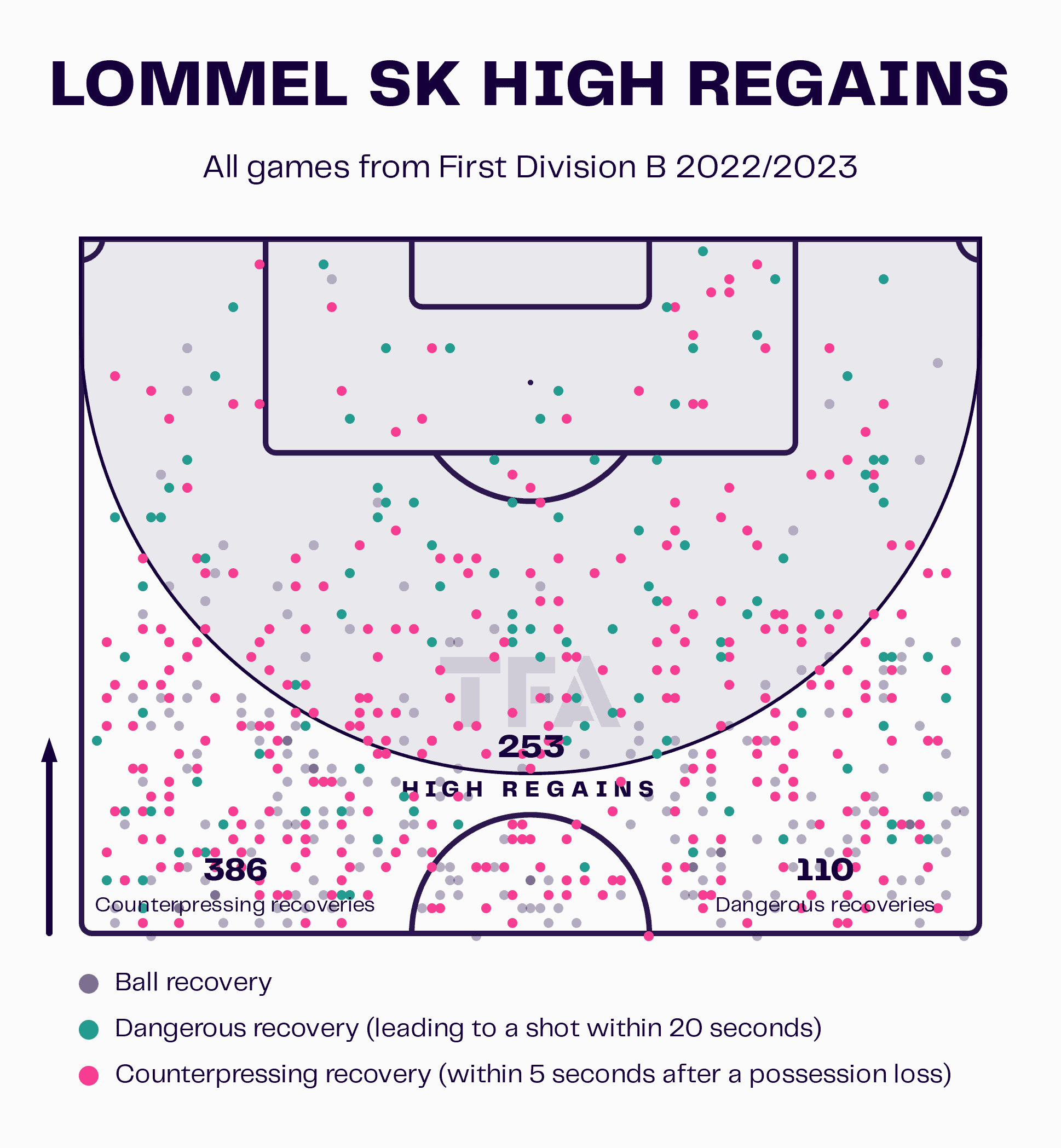
The data viz graphic above shows the pressing statistics of Lommel this season, looking at their high regains, counterpressing recoveries, and dangerous recoveries.
The data is able to back up the evidence that under Steve Bould, Lommel are a side that would rather press strategically than look to constantly use their forwards to put the opposition defenders under pressure while they are in possession.
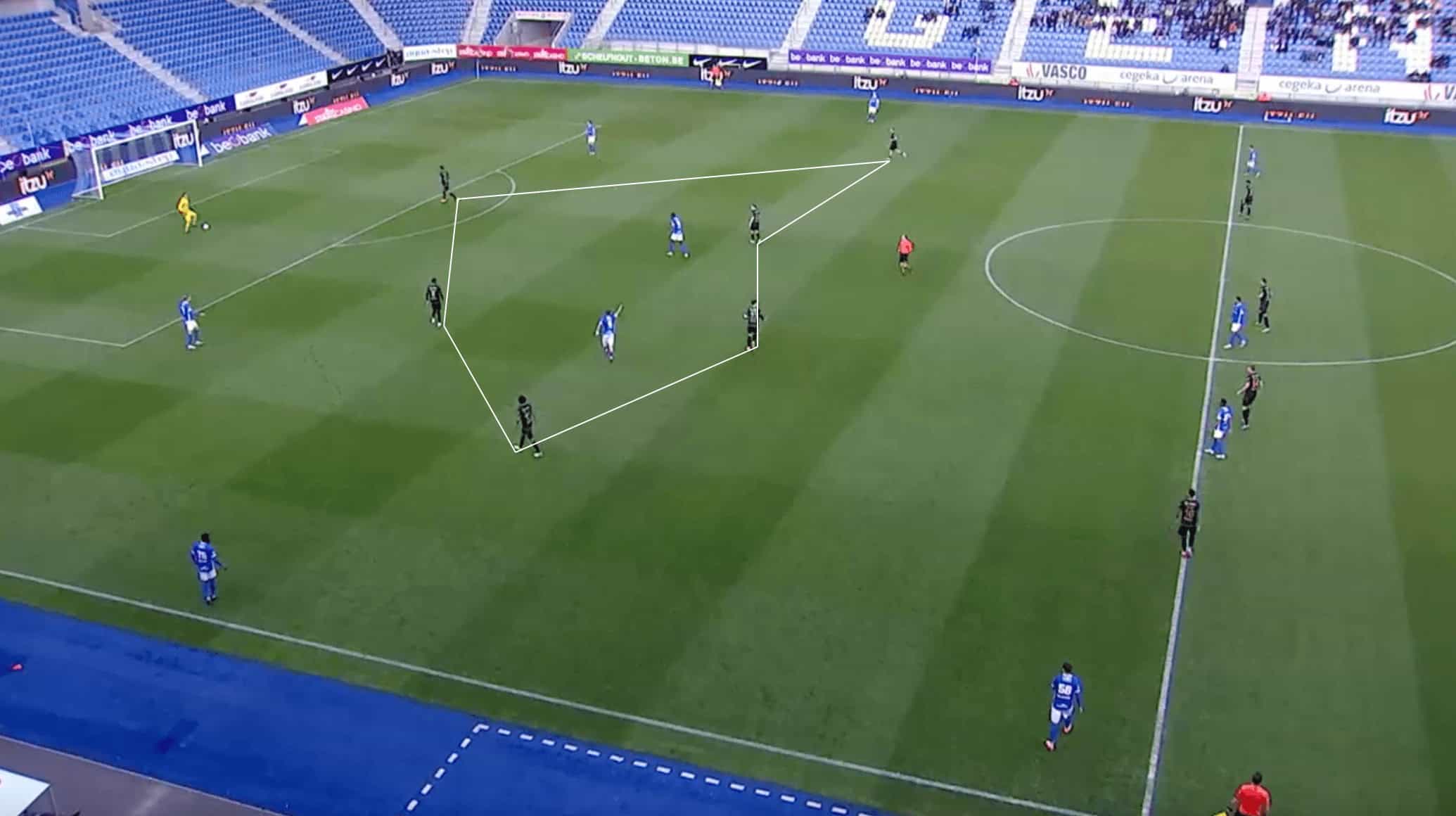
The image above shows the pressing shape that Bould has implemented during his first season in charge of Lommel.
As already mentioned, Lommel are not a side that look to frequently put pressure on opposition defenders, with their pressing middle-of-the-road for Challenger Pro League sides.
Instead, they have adopted a more strategic pressing strategy, looking to deploy an almost block-pressing shape, one that essentially neutralises the ability of the opposition to play into the midfielders.
This forces the goalkeeper to either play the ball wide to the fullbacks or long to the forwards who would need to win a 50-50 header.
As we can see from this example, the box pressing shape has completely encompassed the two Genk II midfielders, eliminating any potential ability to progress the ball through the Lommel lines centrally.
Forcing the ball wide allows Lommel to then look to lock the ball into that one side, with the ultimate goal of winning possession back in an advanced area.
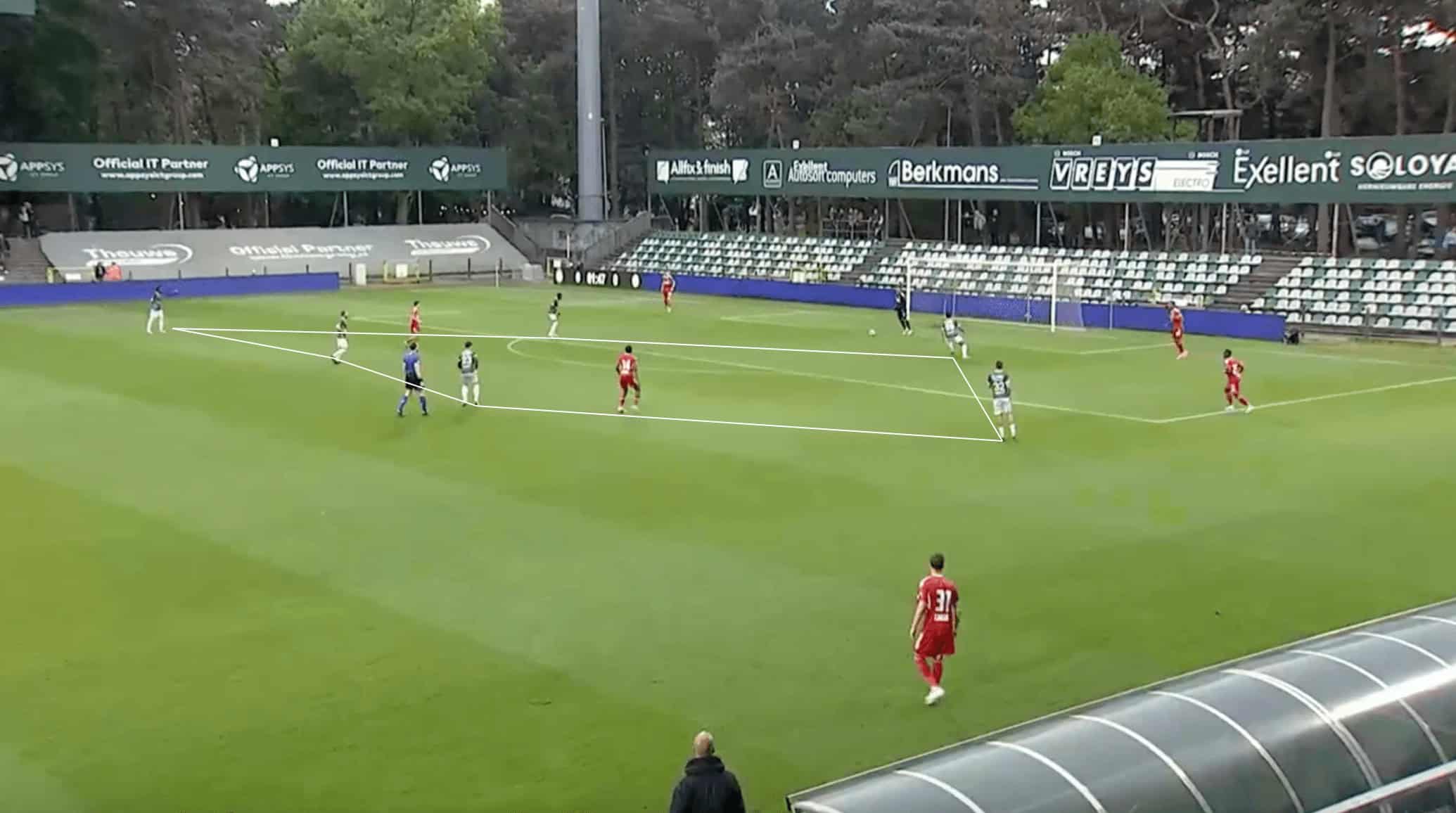
The image above shows another example of this same pressing shape that Steve Bould has implemented during his time in charge of Lommel so far.
Again, we can see the box shape that the Belgian side uses to eliminate the ball being played into a central area from the opposition goalkeeper.
The shape is again able to encompass the opposition midfielders, with the goalkeeper attempting to play a ball over the top and into the area between the Lommel midfield and defence.
However, Lommel are able to recognise this occurring and a centre-back is able to follow the forward into midfield, winning possession back for the Belgian side in an advanced area.
As this section has shown, Steve Bould has been able to implement a very successful strategic pressing system at Lommel.
The box shape has been able to suffocate the opposition’s midfielders during build-up phases, forcing the opposition goalkeeper to play either wide to the fullback or over the top centrally, which plays into Lommel’s hands.
Conclusion
As this tactical analysis has shown, Steve Bould has had what many would consider a successful first season in charge of Challenger Pro League side Lommel.
The 60-year old Englishman’s tactics have translated very well to his first senior managerial job.
A man who has familiarity with playing big sides like Manchester United in his career, Bould will hope that next season he can take Lommel to the next level, which would bring them to the top table of Belgian football.





Comments